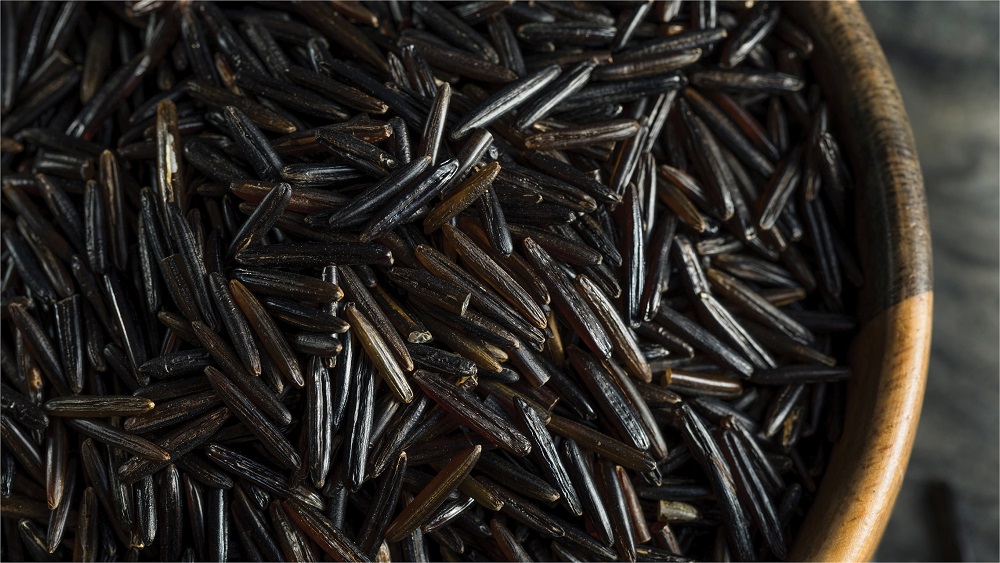A research study on the protein quality of cultivated wild rice grown in Minnesota published by the Agricultural Utilization Research Institute (AURI) has the potential to open up new markets and new uses for the iconic Midwestern crop.
AURI partnered with researchers at the University of Minnesota’s Department of Food Science and Nutrition, the Minnesota Department of Agriculture and the Minnesota Cultivated Wild Rice Council on the project.
Researchers had three objectives for the study: provide data on the nutritional characteristics of cultivated wild rice, determine the large intestinal microbial profile (or the gut microbiome) of a cultivated wild rice diet compared to a brown rice diet and explain why the product hardens when cooked with sweeteners.
To determine the protein quality of cultivated wild rice, compared to brown rice, researchers used the protein digestibility-corrected amino acid score (PDCAAS) method. The PDCAAS score is recognized by the U.S. Food and Drug Administration and required to make a protein claim on food products.
The results of the study indicate that the protein quality of cultivated wild rice is a good plant protein. Both cultivated wild rice and brown rice had PDCAAS scores for plant protein sources at .60 and .61 respectively. The study concluded there is potential to increase the score of cultivated wild rice using alternative cooking methods. Further, when combined in a food product with other protein sources like peas and lentils, the overall PDCAAS score of a food product would meet the FDA standards of a good source of protein.
Further, the results showed that in a high fat diet, cultivated wild rice reduced cholesterol and total liver fat. Liver fat is an early indicator of non-alcoholic fatty liver disease, a serious and growing health issue. Researchers also concluded that a cultivated wild rice diet changed the bacteria profile and had a positive influence on the microbiome.
There were two observations related to the hardening of cultivated wild rice when cooked. First, moisture loss is a main driver for the hardening. However, new packaging and cooking methods of cultivated wild rice could help reduce the moisture loss and the hardening of the rice in sucrose.
The research on hardening presents many opportunities and further avenues of study.
Minnesota is the world’s largest producer of cultivated wild rice. The industry generates about $58.4 million annually for Minnesota’s economy and employs close to 650 people.
“The cultivated wild rice industry plays a significant role in our region’s ag economy. Being able to provide an accurate and up to date protein score was very important to growers and processors. It will help growers expand to new markets, new products and new uses,” said Shannon Schlecht, the Executive Director of AURI. “I am proud of the partnership with the University of Minnesota, the Minnesota Department of Agriculture and the Minnesota Cultivated Wild Rice Council to complete this project.”
Ag Innovation Partnership Program
The cultivated wild rice study was selected through AURI’s Ag Innovation Partnership (AIP) program. Each year AURI puts out a call for submissions on different topic areas of interest, and businesses, researchers, entrepreneurs and producers are encouraged to submit proposals. A panel of AURI staff members review and select projects based on the submissions that most align with AURI’s mission of supporting innovation and creating long-term economic impact. Projects are also selected based on how they meet a need in the agriculture sector.
The selected projects receive AURI’s resources, funding and support to help businesses turn their ideas into reality and catalyze innovation in the state’s agriculture industry. The information generated from each project is made publicly available to help producers, entrepreneurs, businesses and agriculture processors.
About AURI
The Agricultural Utilization Research Institute’s mission is to foster long-term economic benefit through value-added agricultural products. It accomplishes this by using science and technology to help develop new uses for agricultural products. It partners with producers, businesses and entrepreneurs to generate economic impact in Minnesota communities by helping businesses take advantage of innovative opportunities in four focus areas: biobased products, renewable energy, coproducts and food. AURI provides a broad range of services, including applied research and development, scientific assistance and a targeted network of resources to develop value-added uses for crops and coproducts.

